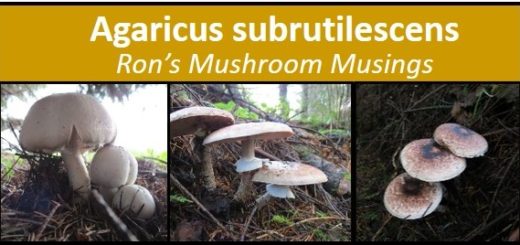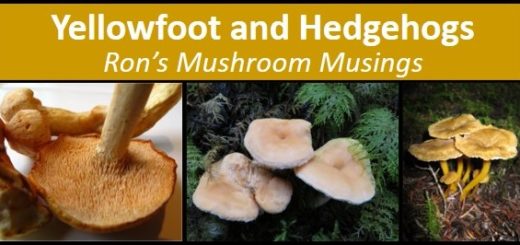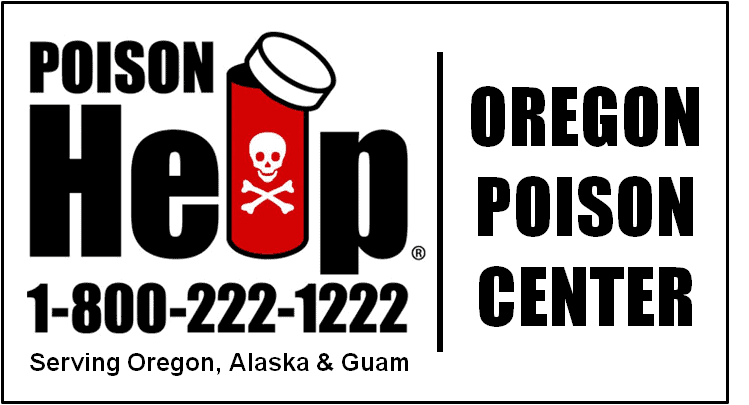Time to put away your garden tools and pick up your mushroom basket
Well, it’s getting to be that time of year when we start transitioning from summer activities to those we enjoy doing in the fall. But before I talk about one of my favorite fall activates, I just have to say this has been one of the best tomato years for us since moving to Eugene.

Normally, I wouldn’t bring this up but last year was so bad I started questioning our ability to even grow a decent tomato. I know the smoke, soot, and ash that blanketed our area had a big impact on our garden’s success but I couldn’t help thinking we just didn’t do enough to be successful. So, to hedge our bets, this year we planted 30-tomato plants just to ensure one would be fruitful. Happily, all the plants did very well and we were eyeball deep in delicious tomatoes of different color, size, shape and flavor. Thankfully, our confidence in productive backyard gardening has been fully (mostly fully) restored. That said, we are definitely cutting back on the number of tomato plants we grow next year to no more than 29.
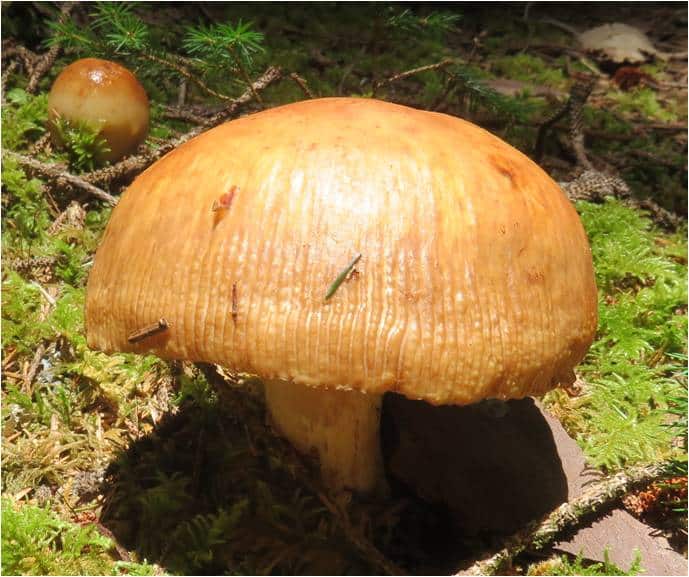
Moving right along to more relevant fall activities; September’s cooler days and rain events normally inspire more species of mushrooms to begin fruiting. Unfortunately, when moisture is sparse and days stay warm some fungal species will opt to wait for better conditions or skip fruiting entirely if the dry spell lasts too long. On the bright side, there are fungi that are absolute minimalists when it comes to fruiting requirements. One such genus of mushrooms is Russula, where some species in this group start fruiting as early as August. In fact, when Sandy and I hike at the coast during the summer we occasionally see Russula Fragrantissima, commonly called the Fragrant Russula.
When young, it has a very pleasant aroma similar to almonds or some say maraschino cherries. It is not considered edible and as Sandy determined this summer from chewing on a piece of the mushroom’s cap, it is acrid tasting with a delayed, very hot kicker, like habanero pepper hot. This mushroom is easily recognizable from its aroma, color, sticky cap, and “snap like a piece of chalk” brittle stem. It fruits in great abundance at the coast and it’s worth trying the smell test at least once. Just make certain to pick a younger specimen, otherwise the whiff you get may not be all that pleasant.
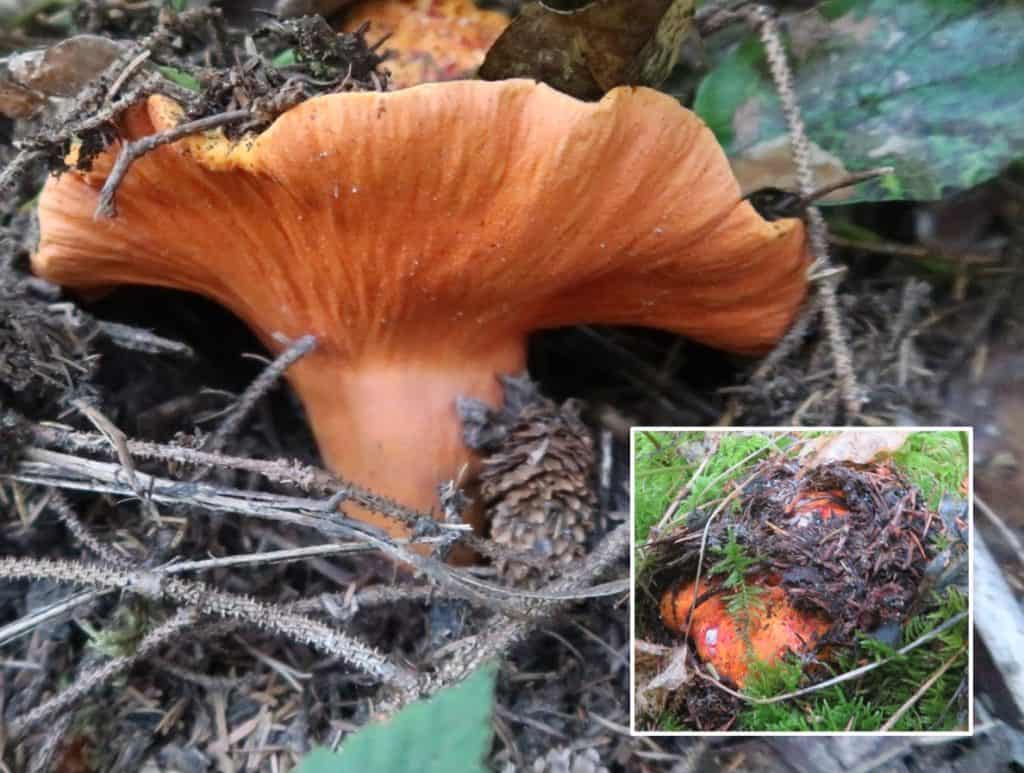
The better Russula species to find for culinary use are Russula xerampelina (Shrimp Russula), Russula olivacea (Purple-Olive Russula), and the parasitized version of Russula brevipes (Short-Stemmed Russula) known as Hypomyces lactifluorum (Lobster Mushroom). The origin of the Lobster Mushroom can be confusing to new mushroom hunters. The Lobster is a combination of a host mushroom, Russula brevipes, and a parasitic fungus, Hypomyces lactifluorum, that infects the host mushroom, contorts it’s shape and changes its color from whitish to a reddish orange. But, this combo-mushroom still retains the scientific name Hypomyces lactifluorum. For God sakes, using the same name to reference two separate and distinct entities only creates confusion. Someone in the mycological field with some influence should take note and possible resolve this naming muddle. So, perhaps for clarity this combo-mushroom should be called Russula hypobrevipes, Russula brevimyces or maybe even Russula lactipes. I like the species name lactipes since it not only resolves the ambiguous naming issue but makes the mushroom sound like it’s lactose intolerant. Now, to quote Forrest Gump “That’s all I have to say about that”. However, I will now talk about a great way to eat the Lobster Mushroom. But first you need to find one or pay up to $40 a pound when they first hit the grocery stores. So, let’s talk about finding one. Lobsters can start as early as August in areas along the coastal range that regularly experience fog or small amounts of moisture. Shaded areas that minimize evaporation or trenches and depressions where moisture concentrates are good places to look. We find Lobster Mushrooms in conifer forests that can consist of Sitka Spruce, Hemlock, and/or Douglass Fir trees. They can be very obvious like the large Lobster in the above photo or mostly covered by forest litter as in the insert above. Cleaning them can be a pain in the posterior but it is highly recommended to pre-clean them up in the forest before adding them to your collection basket. Sandy has demonstrated to me the many benefits of brushing off mushrooms in the woods and how much time is saved when you get them home to cook them up. Once home, do a final cleaning under a running faucet if necessary and cut off any scary or questionable parts.
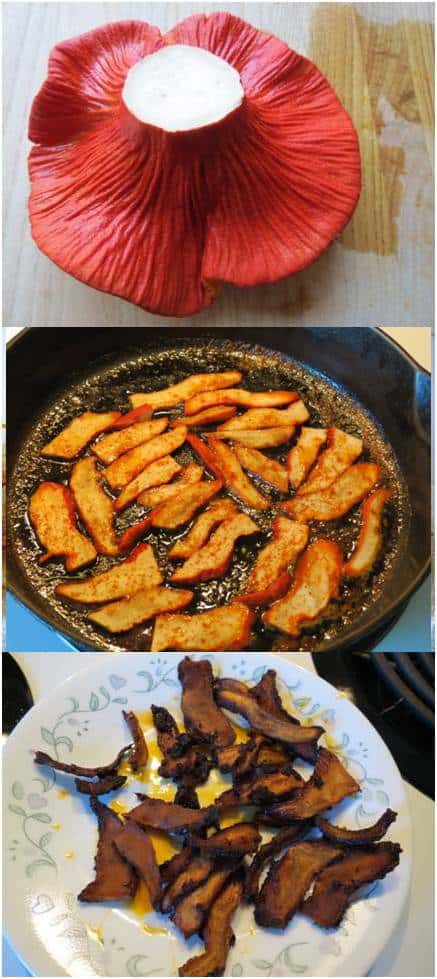
Now you’re ready to make Lobster Mushroom Bacon. Cut off thin slices of mushroom no more than 1/8 inch thick. In a sauté pan or skillet put in 1-Tbsp Toasted Sesame Oil, 2-tsp Hickory Liquid Smoke, 2-Tbsp. Maple Syrup, ½ Tbsp Brown Sugar Bourbon, and ¼ tsp Mesquite Seasoning. You’ll also need Smoked Paprika to sprinkle on the slices after they are placed in the pan. Mix the ingredients and spread them around the pan. Now, heat up the pan with the mixture on medium heat and when the ingredients begin to sizzle place in the Lobster Mushroom slices so they fully contact the surface of the pan. Sprinkle each slice with a generous amount of smoked paprika. Once they start to brown, flip them over, add more smoked paprika and continue cooking until that side is nice a brown. If you think they are done, pop out a slice, let it cool for a few minutes, taste for texture and decide if they are cooked enough. As a final step, get some crispy lettuce, fresh tomatoes, and bread of your choice. You can toast the bread if you like. Place layers of Lobster Bacon, tomatoes, and lettuce on the bread and voila, you’ve made yourself a Lobster Bacon BLT or a L-BLT as my co-recipe creator Matt Silva likes to refer to it. Any and all comments or variations on this recipe are certainly welcome. My only request is if it has anything to do with adding or using Mayo in any way, shape, or form, it is not necessary to mention it. I experience a very unpleasant allergic reaction after ingesting Mayo or anything made with raw eggs so let’s keep the use of it on the down-low, as they say.

One final mention about the genus Russula. While there are currently no known species in our area that are mortally poisonous, there are Russula species that “will” make you sick and some that may result in gastrointestinal distress. To add to the confusion, the color within a single species can be quite variable so be very certain about what you take home. Fortunately, the potentially lactose intolerant Lobster Mushroom, Russula lactipes, is quite easily identified once you study its physical characteristics.
Happy mushrooming and let’s hope the rain predicted for this weekend actually happens.
Ron

